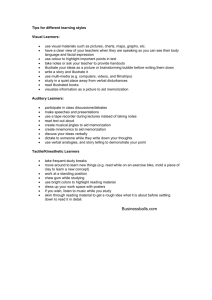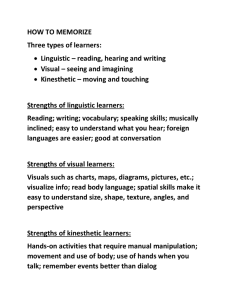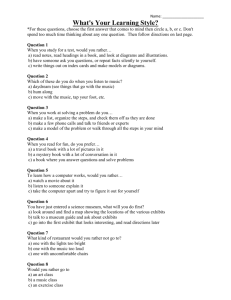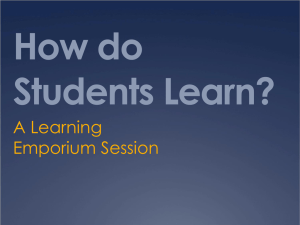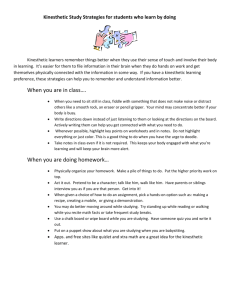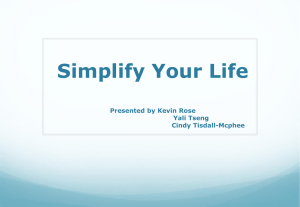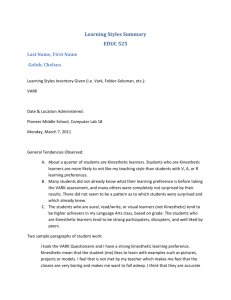Verbal, Visual and Kinesthetic Learning
advertisement
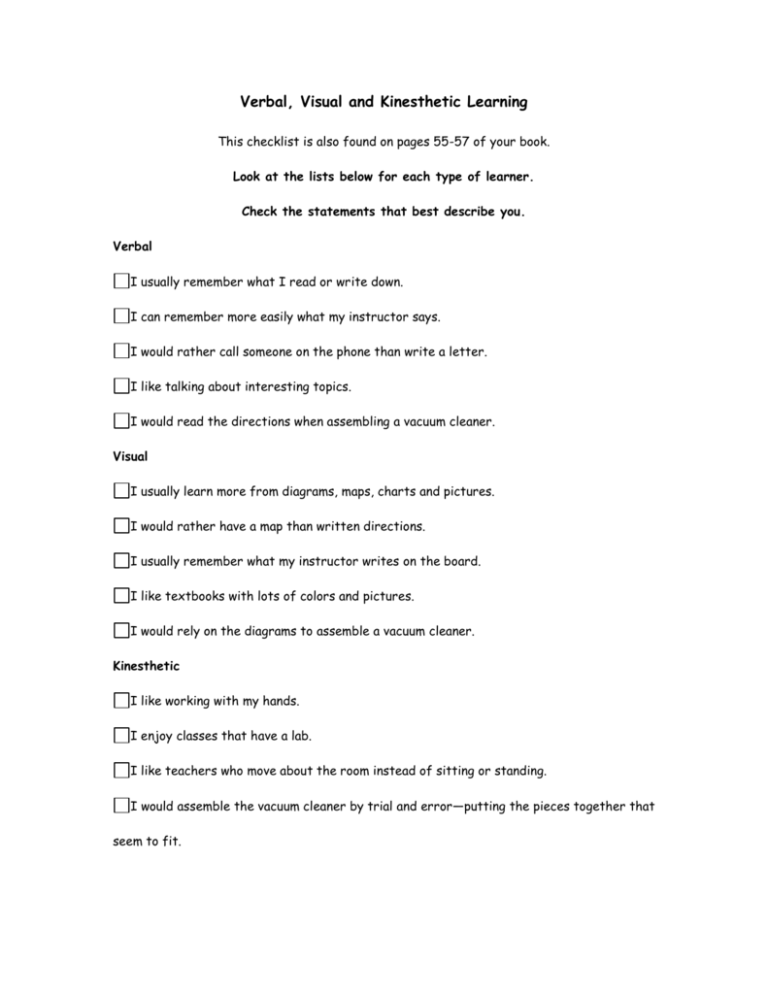
Verbal, Visual and Kinesthetic Learning This checklist is also found on pages 55-57 of your book. Look at the lists below for each type of learner. Check the statements that best describe you. Verbal I usually remember what I read or write down. I can remember more easily what my instructor says. I would rather call someone on the phone than write a letter. I like talking about interesting topics. I would read the directions when assembling a vacuum cleaner. Visual I usually learn more from diagrams, maps, charts and pictures. I would rather have a map than written directions. I usually remember what my instructor writes on the board. I like textbooks with lots of colors and pictures. I would rely on the diagrams to assemble a vacuum cleaner. Kinesthetic I like working with my hands. I enjoy classes that have a lab. I like teachers who move about the room instead of sitting or standing. I would assemble the vacuum cleaner by trial and error—putting the pieces together that seem to fit. The exercise above will help you discover your learning preferences. Your approach to learning may be more balanced or may favor one preference. Which description sounds most like you? Read the suggestions below to see how you may improve your study skills. Verbal Learners Verbal learners usually learn better with written or spoken language. If you believe you are stronger in the verbal area here are things you can do to help you study. re-write your notes outline reading material recite your notes out loud discuss the class material with another person re-write your class notes while adding notes from the textbooks Visual Learners Visual learners usually learn better with information presented visually as in pictures or images. If you believe you are stronger in the visual area, here are things you can do to help you study. examine the diagrams and charts in your textbooks re-write your notes using mind maps and time lines highlight your notes or textbooks with different colors color code with highlighters (eg. yellow for facts; blue for definitions) lay out your notes on your desk to study them and visualize the location of information on your desk top when taking an exam. Kinesthetic Learners Kinesthetic learners usually learn better when they are moving or doing something active. If you believe you are stronger in the kinesthetic area, here are things you can do to help you study. recite your notes out loud while pacing or moving about your room create flash cards teach/present the material you are studying to a friend draw mind maps or pictures to accompany your notes Try the suggestions above that fit your learning style preference. If you are a visual learner, use the visual techniques to study. But remember that this is only a preference. Don’t hesitate to experiment with some of the other suggestions. Try using some verbal and kinesthetic learning techniques to supplement your dominant preference.
